By Christine Seisun
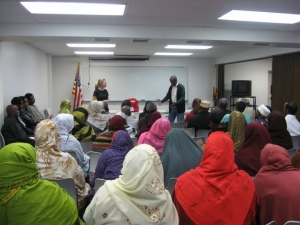 As a San Diego native, I was quite surprised to discover that my hometown had just last year surpassed Los Angeles to become the nation’s number one refugee resettlement location.
As a San Diego native, I was quite surprised to discover that my hometown had just last year surpassed Los Angeles to become the nation’s number one refugee resettlement location.
August 8, 2010 (San Diego’s East County)--The friendly gentleman smiles at me, taps his injured leg with his cane and recounts how he obtained the injury in a car bomb in Iraq. “We leave Iraq because of bombings and now you want us to worry about big earthquakes? Can you at least give me six months?”
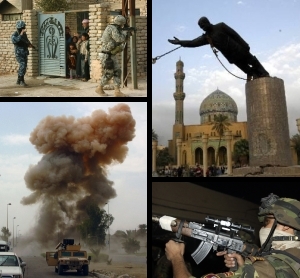
I had just finished giving a disaster preparedness presentation on behalf of the San Diego Red Cross to recently arrived Iraqi refugees in San Diego’s County. Last year, I took on a position within the Outreach program of the American Red Cross and began working in areas of San Diego like City Heights and El Cajon that before, and embarrassingly enough, were completely unknown to me.
As a San Diego native, I was quite surprised to discover that my hometown had just last year surpassed Los Angeles to become the nation’s number 1 refugee resettlement location. The vast majority of those are in East County. View a chart of locations by community in San Diego County: http://www.kaldaya.net/2009/Images/_News/iraq_t630.jpg.
The United Nations defines a refugee as a person who has left the borders of their country of origin and cannot return due to "a well-founded fear of being persecuted for reasons of race, religion, nationality, membership of a particular social group, or political opinion." Although refugee arrivals in the United States accounted for less than 8% of all legal foreign migration to the United States in 2009, they are unique in their status and very distinct from other immigrants. Refugees, unlike asylum seekers who apply for safe haven once they arrive on US soil or at the borders, seek their protective status from abroad and almost e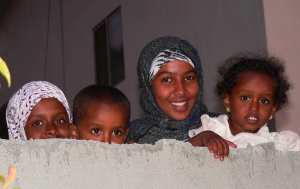 xclusively through the UN High Commissioner of Refugees (UNHCR).
xclusively through the UN High Commissioner of Refugees (UNHCR).
The small number in resettled refugees is not due to a lack of people in need of resettlement or a dearth of those holding refugee statuses, but rather because the resettlement process is one wrought with bureaucracy and stage checks for potential resettled refugees. In its 2009 Global Trends Report the UNHCR reported that some 43.4 million people were forcibly displaced from their homes. Those who are displaced but still remain in-country are termed Internally Displaced Peoples (IDP). To become a refugee, and a resettled one at that, is a much more labor intensive process and is no small bureaucratic or political feat.
 First, a person must flee their homeland because of a real and credible threat to themselves. This was the case for Tamara Mirza who quit school in Iraq after her friend was kidnapped, raped and subsequently murdered. Tamara obtained refugee status and was eventually resettled in El Cajon, San Diego. Refugees must apply either through the UNHCR for protective refugee status or directly to the embassy of the country in which they are hoping to relocate. From here there are only three possible durable solutions: (1) voluntary repatriation to the refugee’s country of origin, (2) local integration in the country of asylum, or – and this is approximately only 1% of UNHCR refugee cases – (3) resettlement to a third country. Resettlement is usually the last resort and is only considered for those in need of international protection.
First, a person must flee their homeland because of a real and credible threat to themselves. This was the case for Tamara Mirza who quit school in Iraq after her friend was kidnapped, raped and subsequently murdered. Tamara obtained refugee status and was eventually resettled in El Cajon, San Diego. Refugees must apply either through the UNHCR for protective refugee status or directly to the embassy of the country in which they are hoping to relocate. From here there are only three possible durable solutions: (1) voluntary repatriation to the refugee’s country of origin, (2) local integration in the country of asylum, or – and this is approximately only 1% of UNHCR refugee cases – (3) resettlement to a third country. Resettlement is usually the last resort and is only considered for those in need of international protection.
Family ties, professional abilities and linguistic advantages are all factors taken into consideration by potential host countries. If seeking resettlement in the United States, the Department of State takes on the case and will refer it to the Department of Homeland Security. Both agencies will then screen and interview the applicant to make sure that they pose no security threat. Once approved, the refugee is then placed with a charity or church that will take over their case and help with medical screening. These resettlement organizations serve as voluntary agencies, known as “VolAgs” with over 300 VolAgs nationwide. The process of refugee resettlement in the United States offers an impressively commendable program that is funded, legal and with the appropriate safeguards ,showcase the welcoming side of American immigration policy.
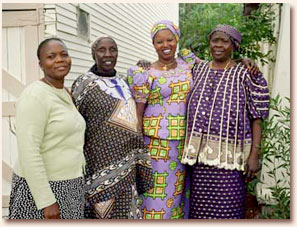 San Diego’s spot as #1 in refugee resettlement was a long time in coming. After the first Gulf War of the 1980’s, the initial wave of Iraqi immigrants arrived in the United States with many of them settling in southern California. Likewise, following the 1991 toppling of the regime of Somali leader Siad Barre, the United States joined a massive international refugee resettlement push and relaxed some of its more strict policies towards refugee immigration. Small groups of Somali refugees took advantage of America’s quota of African immigrants and a cluster of Somalis eventually settled in San Diego. These “original” groups stayed and successfully integrated into the region and cultivated local stores, churches/mosques and service agencies.
San Diego’s spot as #1 in refugee resettlement was a long time in coming. After the first Gulf War of the 1980’s, the initial wave of Iraqi immigrants arrived in the United States with many of them settling in southern California. Likewise, following the 1991 toppling of the regime of Somali leader Siad Barre, the United States joined a massive international refugee resettlement push and relaxed some of its more strict policies towards refugee immigration. Small groups of Somali refugees took advantage of America’s quota of African immigrants and a cluster of Somalis eventually settled in San Diego. These “original” groups stayed and successfully integrated into the region and cultivated local stores, churches/mosques and service agencies.
Decades later when the second Gulf War began in Iraq in 2003 and Somali unrest remained at fever pitch, both the local communities and their built-up networks provided the necessary pull for other ethnic refugee community members to be resettled in southern California. In essence, refugee resettlement in San Diego and Los Angeles eventually snowballed into the modern day situation in which local refugee communities are large enough to provide the appropriate resources to incoming refugees, make them feel welcome and most importantly, help offset the prohibitive costs of living in southern California.
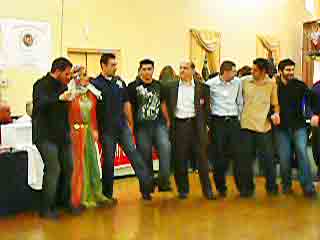 Following United States military involvement in the Iraq and Afghanistan, millions of Iraqis have fled their country, creating the biggest Mideast refugee problem since 1948. In 2007, both Democratic and Republican Senators introduced legislation to facilitate refugee immigration for those whose lives have been threatened because of their work for U.S. forces in Iraq and Afghanistan. The Refugee Crisis in Iraq Act of 2007 was a bipartisan amendment added to a defense bill which established Special Immigrant Visas (SIVs) for Iraqi nationals who worked for, or on behalf of, the US government in Iraq. State Department employees and military officials were forceful in describing the plight of Iraqis who were imperiled, helping the legislation gain political support.
Following United States military involvement in the Iraq and Afghanistan, millions of Iraqis have fled their country, creating the biggest Mideast refugee problem since 1948. In 2007, both Democratic and Republican Senators introduced legislation to facilitate refugee immigration for those whose lives have been threatened because of their work for U.S. forces in Iraq and Afghanistan. The Refugee Crisis in Iraq Act of 2007 was a bipartisan amendment added to a defense bill which established Special Immigrant Visas (SIVs) for Iraqi nationals who worked for, or on behalf of, the US government in Iraq. State Department employees and military officials were forceful in describing the plight of Iraqis who were imperiled, helping the legislation gain political support.
An additional program also provided SIVs for translators and interpreters to U.S. forces and contractors in both Iraq and Afghanistan. The amendment’s chief supporters, Senators Ted Kennedy (D-Mass.), Gordon Smith (R-Ore.), Sam Brownback (R-Kan.), and Joe Lieberman (D-Conn.), came from a diverse range of political voices usually at odds with one another over the Iraq war. Both Senator McCain and then-Senator Obama also supported the amendment. However, SIV immigrants in the United States are only a small fraction of incoming refugees, with only 2,600 American SIV arrivals in 2009.
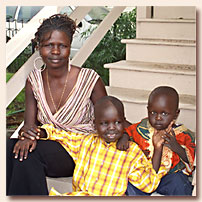 Unfortunately, there is only one piece of legislation – commemorating its 30th birthday as of this year – guiding American policy on refugee resettlement: the 1980 Refugee Act. Prior to this piece of legislation, the US government only passed refugee resettlement legislation on a country by country basis. This year, the Refugee Act is getting a sorely needed review and hopefully, a large overhaul to streamline the resettlement process which currently goes through three different government departments before even reaching the resettlement agencies who will be working directly with the refugee. In view of the fact that trauma, or PTSD, is nearly “universal” in incoming Iraqi refugees according to a senior International Rescue Committee official, investment in psychosocial services is critical.
Unfortunately, there is only one piece of legislation – commemorating its 30th birthday as of this year – guiding American policy on refugee resettlement: the 1980 Refugee Act. Prior to this piece of legislation, the US government only passed refugee resettlement legislation on a country by country basis. This year, the Refugee Act is getting a sorely needed review and hopefully, a large overhaul to streamline the resettlement process which currently goes through three different government departments before even reaching the resettlement agencies who will be working directly with the refugee. In view of the fact that trauma, or PTSD, is nearly “universal” in incoming Iraqi refugees according to a senior International Rescue Committee official, investment in psychosocial services is critical.
With the United States historically taking in more refugees than every other country in the world combined, it can be said that Southern California is now the refugee resettlement capital of the world. At the moment, the large majority of cases arriving in both San Diego and Los Angeles come from both Iraq and Iran, respectively. As Ralph Achenbach, president of San Diego’s Refugee Forum points out “many of the [San Diego] refugees arriving are highly educated and skilled, with great potential to immediately contribute to their new communities.” Unfortunately, this can also be a double-edged sword as these refugees are accustomed to a higher standard of living in their home country and arrive in the United States’ harsh economic climate with unrealistic expectations.
 Yet, it must be remembered that refugees are very different than migrants coming to the United States simply for work. In a 2009 International Rescue Committee Report on Iraqi Refugees in the United States, most refugees stated that they still would have elected to resettle in the United States given the challenges they now face.
Yet, it must be remembered that refugees are very different than migrants coming to the United States simply for work. In a 2009 International Rescue Committee Report on Iraqi Refugees in the United States, most refugees stated that they still would have elected to resettle in the United States given the challenges they now face.
With approximately 80% of San Diego and Los Angeles refugee resettlement cases stemming from Iraq and Iran, respectively, targeted service agencies have started to crop up over the two cities. Overwhelmingly, most of the Iraqi refugees to San Diego are Chaldean, that is, Iraqi Catholic. A local Chaldean church in El Cajon counts nearly 40,000 members in an area of 100,000 residents.
Catholic Charities, the largest refugee resettlement agency in San Diego, typically processes upwards of 1,200 refugees per annum and offers resettlement services such as basic household furnishings, health assessments, ESL and acculturation classes. Long term settlement with acculturation into the American society and economy is the ultimate end-goal of any refugee and resettlement agency. Catholic Charities Refugee Services supervisor, Dr. Mike McKay, notes that “the refugee is someone who comes here who doesn’t want to be dependent but wants to start a new life out of harm’s way…the numbers show that they will be the next business professionals.” He goes on to state that America’s refugee resettlement program “shows the best side of our country to help those who are at risk.”
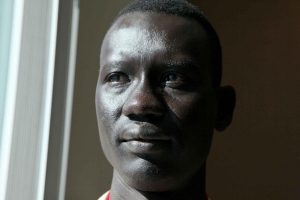 Indeed, the benefits are mutual. In a 2008 report by the Public Policy Institute of California it was found that foreign-born residents of the Golden State, including refugees, were far less likely to commit violent crimes than those who are native-born. It is important to remember that refugees are not the ones partaking in the violence of their home country; they are the ones fleeing it. Crawford High School, located in the colorful City Heights neighborhood of San Diego and one of the refugee resettlement hubs, boasts one of the most ethnically diverse schools in the state, offering students valuable life lessons in cultural interaction. It is said that as many as 24 cultures and 32 languages can be found in this small central San Diego area. Lastly, Achenbach points out that the tangible benefits of diversity in a community such as exposure to new foods, language, and cultures coupled with the intangible benefit of being exposed to a new way of thinking provides for an excellent trade-off.
Indeed, the benefits are mutual. In a 2008 report by the Public Policy Institute of California it was found that foreign-born residents of the Golden State, including refugees, were far less likely to commit violent crimes than those who are native-born. It is important to remember that refugees are not the ones partaking in the violence of their home country; they are the ones fleeing it. Crawford High School, located in the colorful City Heights neighborhood of San Diego and one of the refugee resettlement hubs, boasts one of the most ethnically diverse schools in the state, offering students valuable life lessons in cultural interaction. It is said that as many as 24 cultures and 32 languages can be found in this small central San Diego area. Lastly, Achenbach points out that the tangible benefits of diversity in a community such as exposure to new foods, language, and cultures coupled with the intangible benefit of being exposed to a new way of thinking provides for an excellent trade-off.
For refugees coming from a world of violence and severe insecurity, the stability offered in cities such as San Diego or Los Angeles allows for a new life free of danger. The children of refugee resettlement cases likewise become integrated in the American school system and culture creating a diverse atmosphere for their fellow community members. The Palestinian-Iraqi refugee family of Jamal Abu Al-Nasab, decided to seek resettlement after Jamal sustained two broken ribs in a bomb injury and his son Ahmad was kidnapped and tortured. After living in appalling conditions in a refugee camp in the desert region between Iraq and Syria for three years, the Abu Al-Nasab family obtained the go ahead to resettle in the United States. After years of horrible violence, Jamal told his case worker that arriving in the United States had finally “brought color to his life.”
This article first appeared in the August/September issue of Westlake Malibu Magazine.








Recent comments